Cranbrook design graduates express human needs through furniture and products
This Virtual Design Festival school show features work by nine design students from the Cranbrook Academy of Art, including an AR headset that gamifies everyday life and an aluminium light that embodies fairytale narratives. The projects presented here are the final outcome of the students' graduate 3D Design course, which is based in Cranbrook's Michigan The post Cranbrook design graduates express human needs through furniture and products appeared first on Dezeen.

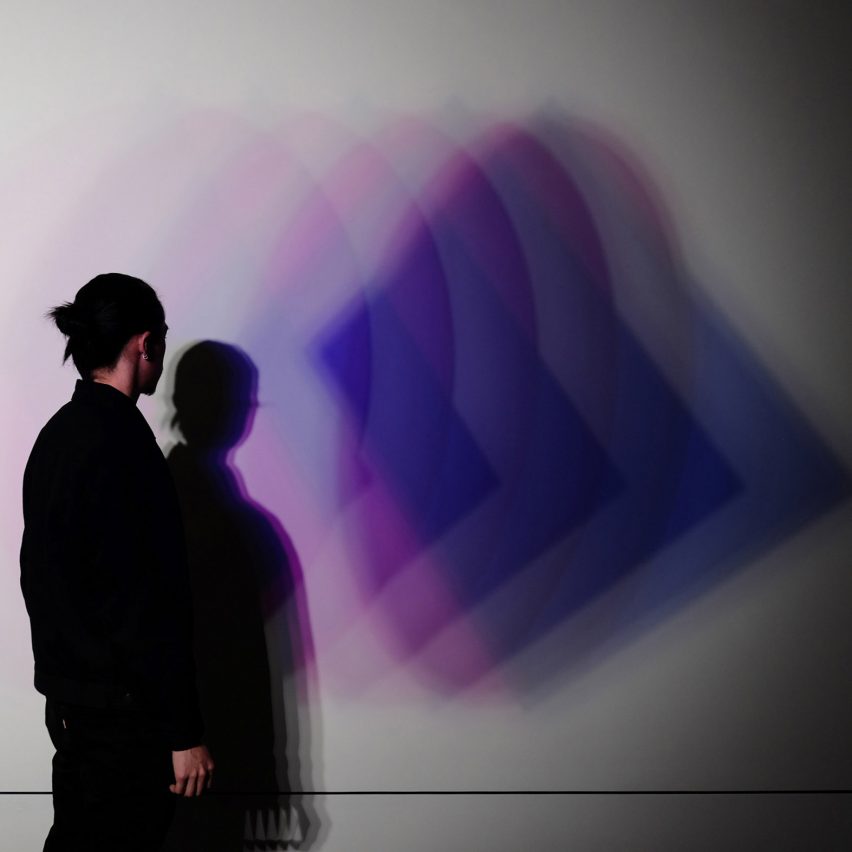
This Virtual Design Festival school show features work by nine design students from the Cranbrook Academy of Art, including an AR headset that gamifies everyday life and an aluminium light that embodies fairytale narratives.
The projects presented here are the final outcome of the students' graduate 3D Design course, which is based in Cranbrook's Michigan campus and aims to "explore human needs as expressed through the furniture and products we live with".
Master of Fine Art in 3D Design, Cranbrook Academy of Art
University: Cranbrook Academy of Art
Course: MFA 3D Design
Tutor: Scott Klinker
Course statement:
"The 3D Design department at the Cranbrook Academy of Art is an experimental laboratory to explore human needs as expressed through the furniture and products we live with. Through a process of questioning, making and discussing, our graduates develop a broad critical framework for evaluating design.
"The programme straddles the contexts of mass-produced industrial design and fine design, situated in the overlap between design, fine art and craft. The selected works shown here represent research from our 2020 graduating class of nine students."
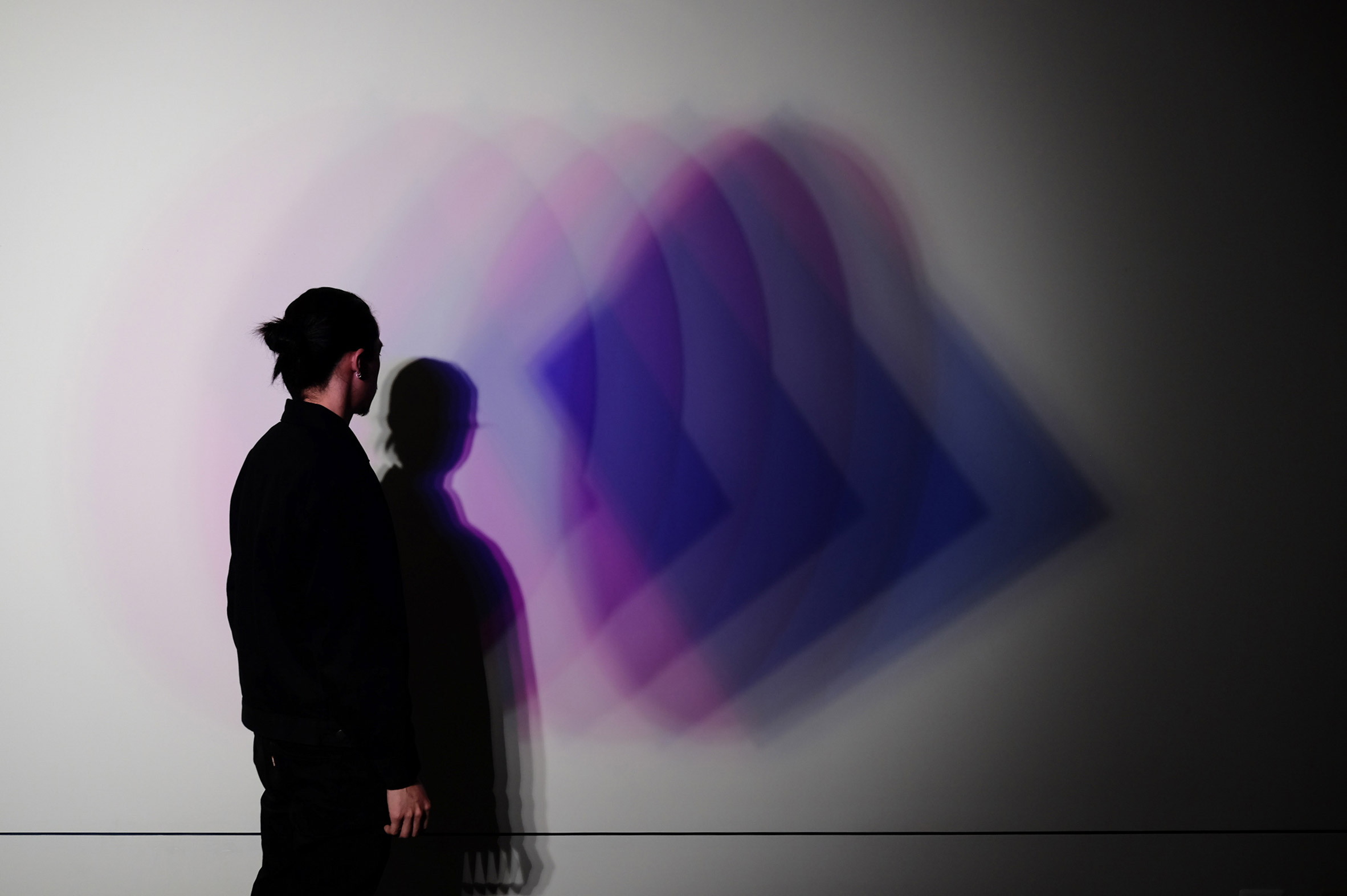
Opacity by Chu Peng Chih
Materials: acrylic, light and motor
"Light is something we always take advantage of but rarely stop to think about – we see it just as a moment of brightness. I experiment with different lighting sources and then combine them with lenses and other materials to create a unique visual effect.
"Once the role of light starts to change in our minds, we might see our world differently as if through a brand new lens. Light and shadow are always with us, whether you like it or not. Be genuine, be tender."
Website: chupengchih.com
Instagram: @chupengchih
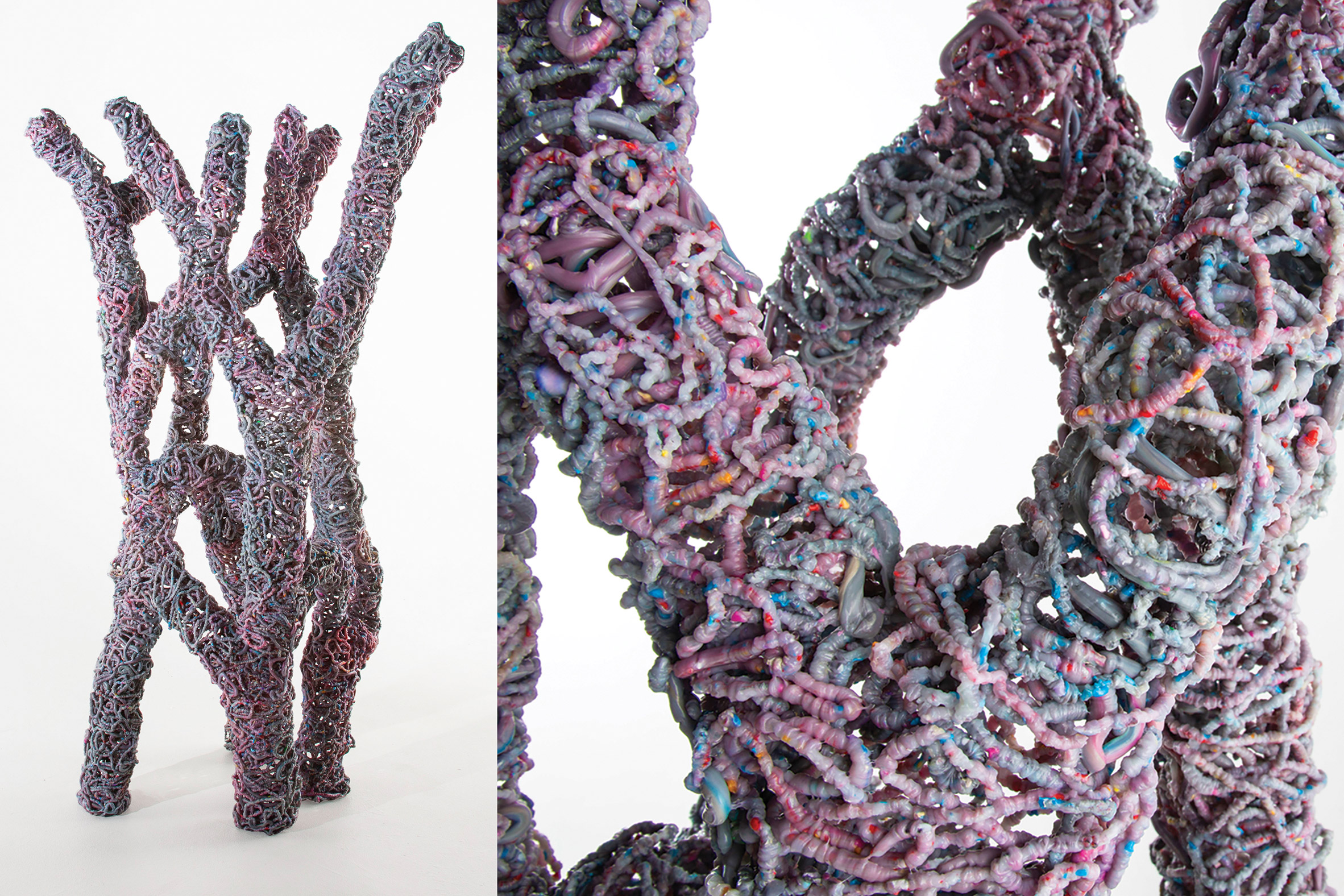
Growth by Cody Norman
Materials: post-industrial, post-consumer and virgin HDPE plastic
"My work explores the relationship between chaos and order. I'm inspired by natural forces, biomimicry and sustainability. I used a handheld extrusion gun to shape recycled plastic into organic forms resembling trees and corals, with the aim of creating objects that incite conversations about materiality, process and form.
"My process is not a solution to the plastic pollution crisis but to drive awareness. The objects resemble nature but have an element of function, alluding to 'useful' plastic objects. I seek to create work that emulates natural structures and makes viewers question the materials and processes that are being used."
Website: codyjamesnorman.com
Instagram: @gcody3d
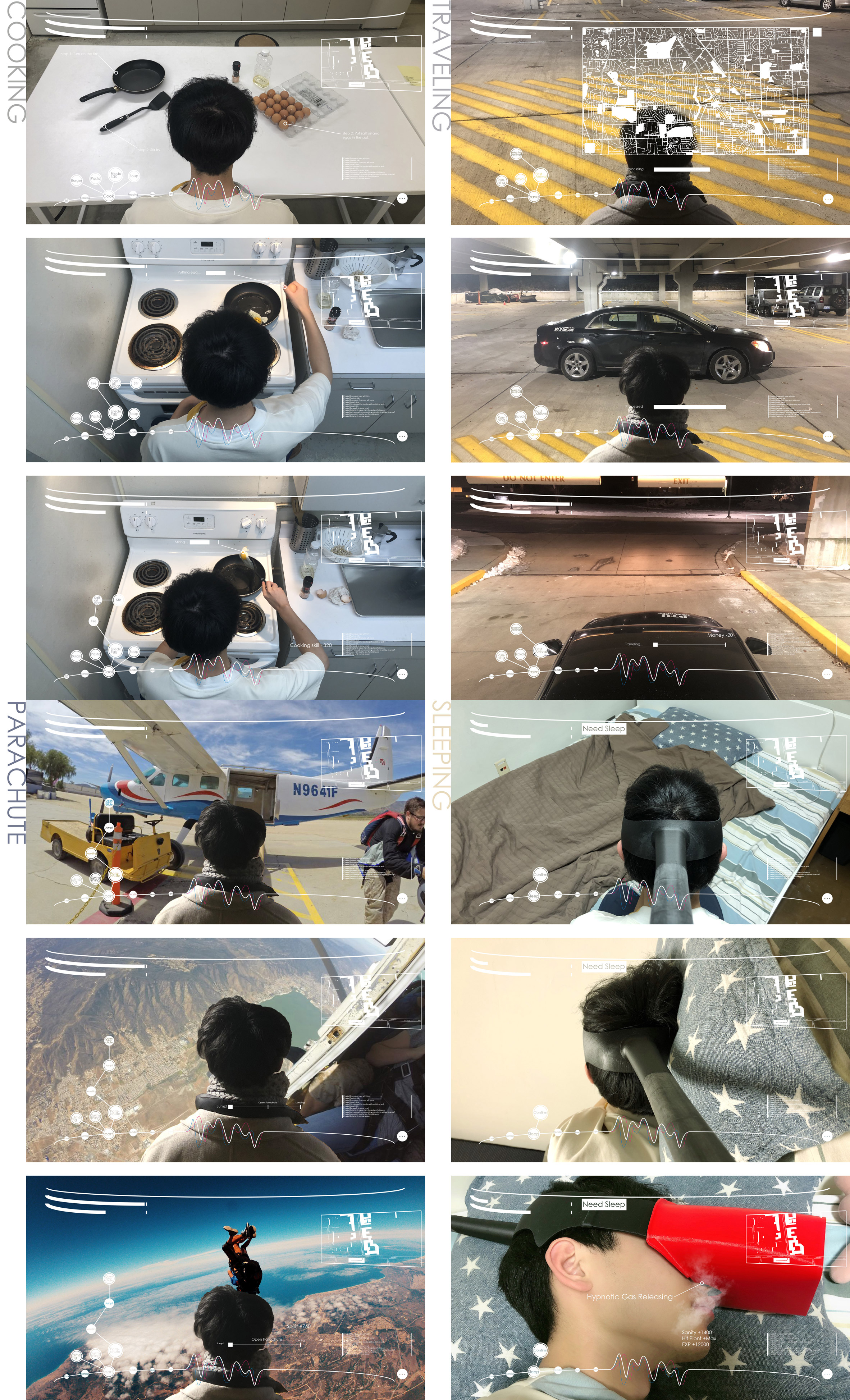
Earth Online by Da Zhang
Materials: Raspberry Pi, LCD Monitor, camera, 3D-printed PLA and batteries
"Earth Online is a conceptual design that looks critically at the line between 'real life' and online gaming. It consists of an immersive head-mounted device, camera, electronic muscle controller and other modular components.
"In this case, the users observe themselves through the camera behind the head, as if playing a MMORPG (massively multiplayer online role-playing game). They can control their physical actions by tapping virtual buttons.
"The concept combines gaming and the real world by using a third-person perspective to allow users to objectively see themselves, transform some of their actions into button presses and convert user status information into hitpoint, experience and reputation values."
Website: dadaz147147.com
Instagram: @dadaz147147
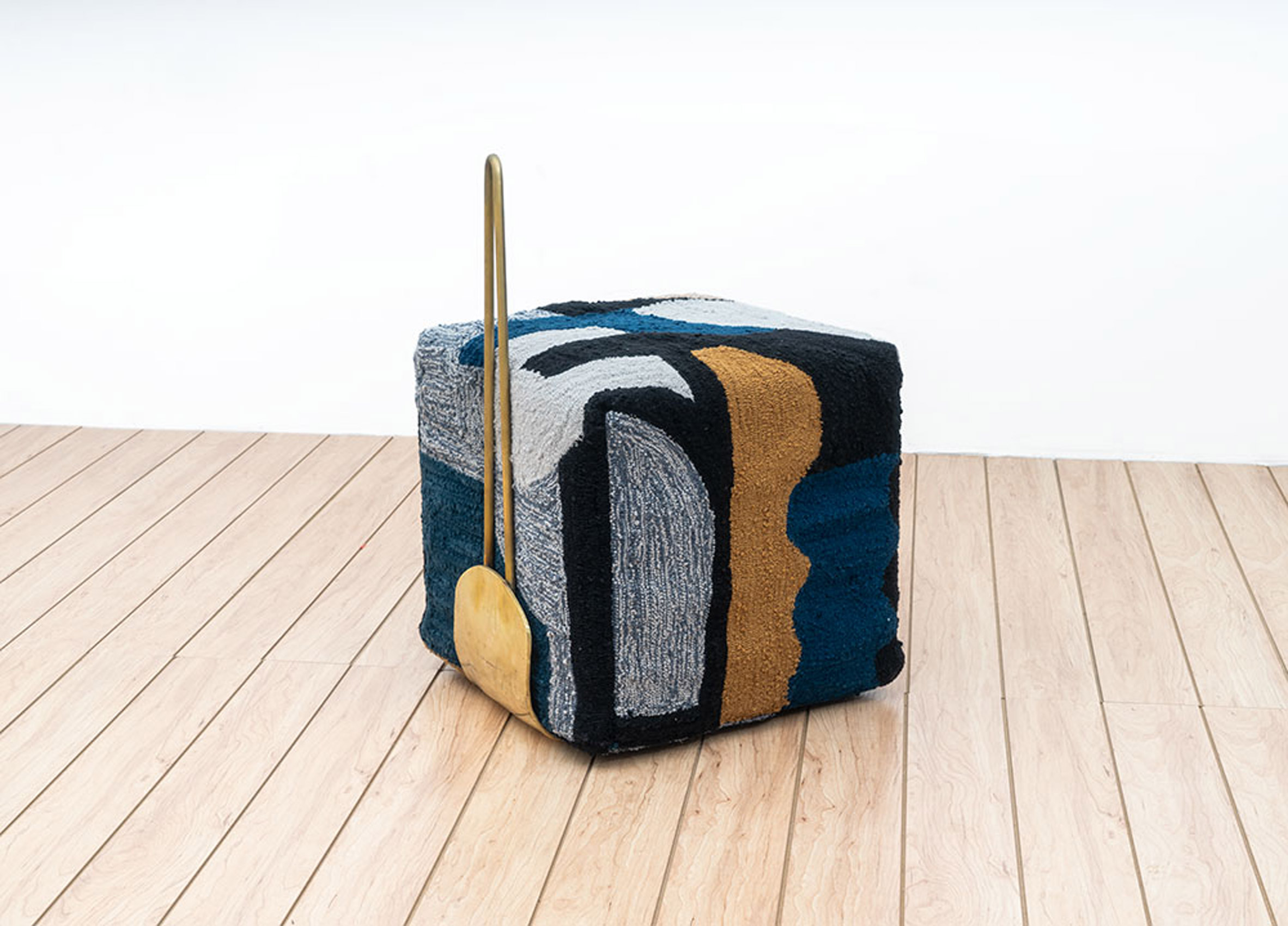
The Clip Chair by Dee Clements
Materials: hand-tufted upholstery, high-density foam, brass sledge base and chair back
"The Clip chair is made of hand-cut and -forged brass with a tig-welded brass back. The cushion is made of high-density foam, upholstered with hand-tufted wool.
"Each side of the cube cushion is different and can be taken out of its brass base to change the display orientation."
Website: studioherron.com
Email: info@studioherron.com
Instagram: @studio_herron

Dixie by Erik Magnuson
Materials: mixed materials and a fibreglass chair
"Growing up between the sea and the city, I am entranced by tide pools and the plastic waste that is carried through them with every wave.
"Through a variety of media, I seek to create objects that demand to be utilised and investigated while embodying concepts of identity, violence, revulsion and the weird. From biomorphology to googly eyes and everything in between, I continue to navigate the realms of my imagination through humour, an examination of process, and a diligence to learn from failure."
Website: erikmagnuson.com
Instagram: @erikdmagnuson
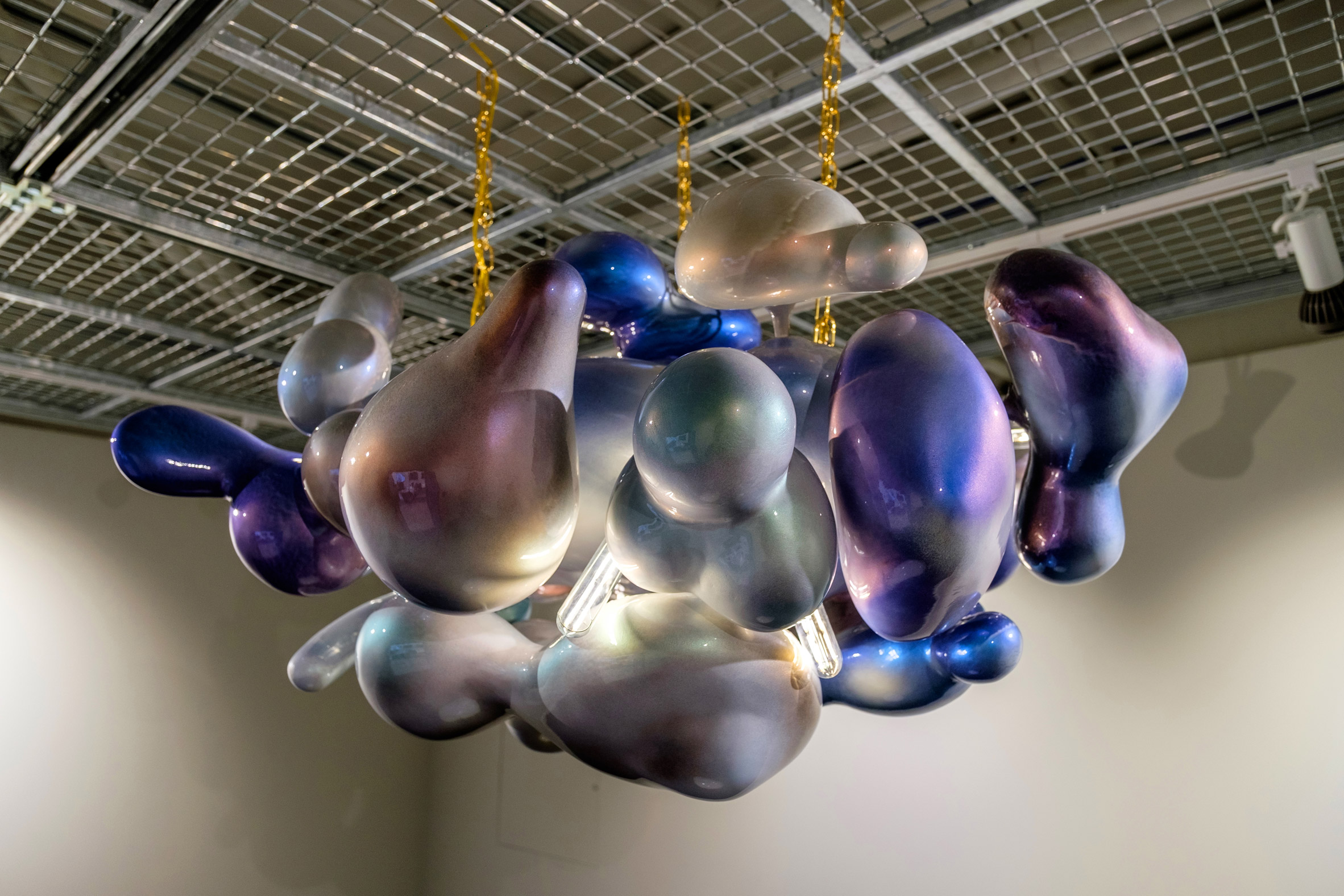
Beyond Luminosity by Joonghan Bae
Materials: aluminium, epoxy, fibreglass and polystyrene
"My work explores whimsical forms and reflects the positive values found in fantasy narratives. Even the most simple, childish fairytales project a more hopeful world than the one we are living in.
"These other worlds do not exist in our material world but that does not mean they are not real. If they are not real, as the adults often say to the children, where do the values and all the positive energy come from?"
Website: joonghanbae.com
Instagram: @joonghan_bae
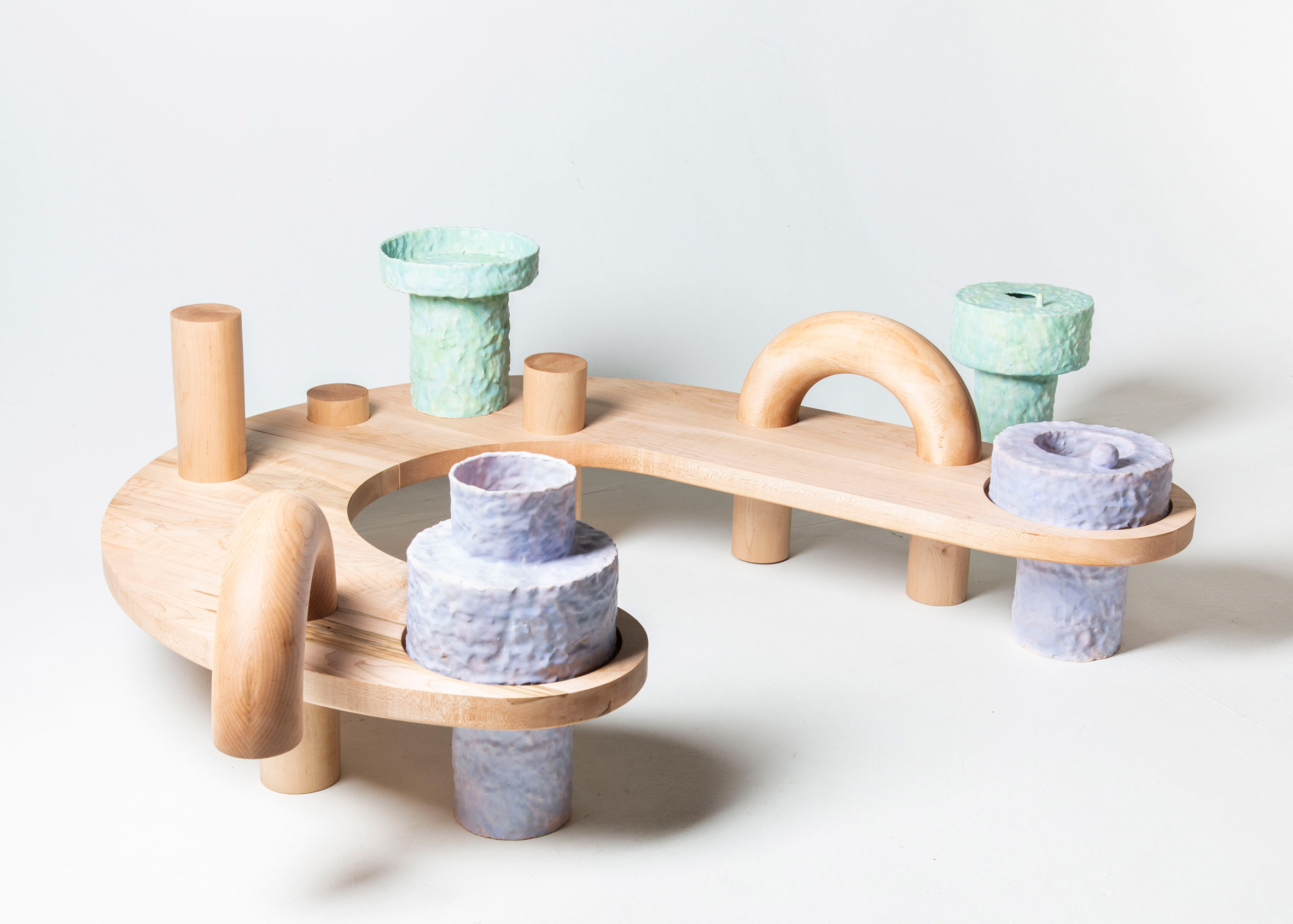
Untitled (Macaroni for Every Being) by Karen Lee in collaboration with Brett Evans
Materials: wood and ceramic
"My work attempts to create new object systems, which encompass both our own, human understanding of them and the object's experience of inhabiting those structures. Some of these structural design experiments explore the 'in-betweenness' of objects in terms of their value as both functional furniture and as objects that can possess their own agency.
"Broadly, my work engages with the language of vessels and communal systems, in a bid to redefine their roles in an ever-changing domestic landscape. With the end applications ranging from tabletop vessels to full-scale ambiguous forms that could potentially be low tables, all my objects utilise a mixture of two traditional materials – wood and ceramic."
Website: karenlee.us
Instagram: @bodegadog
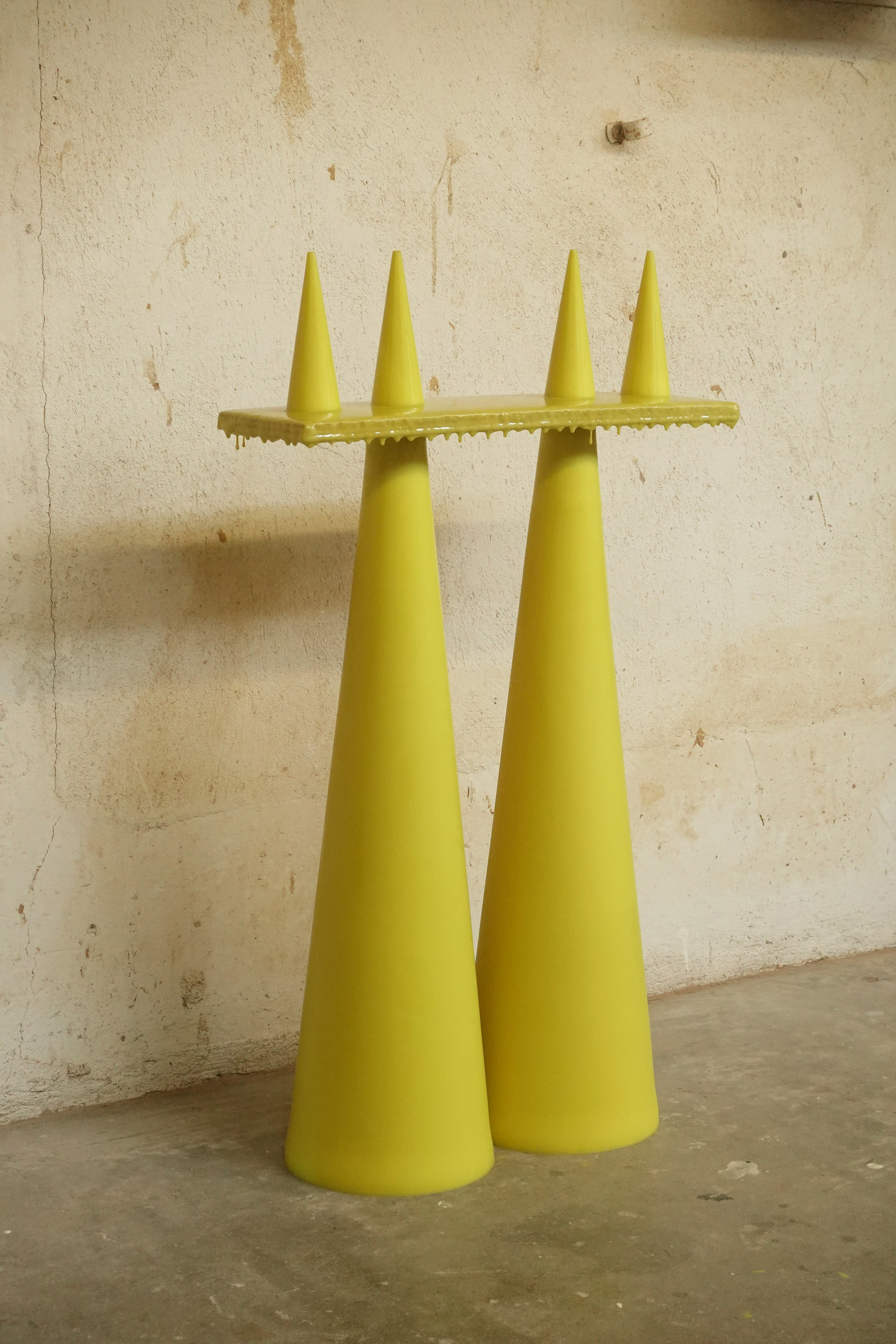
Cone Form (Table) by Kyle Joseph
Materials: UV-sensitive, pigmented polyurethane rubber
"Kyle Joseph is a designer from Miami, Florida and is currently based in Detroit, Michigan.
"His work focuses on form, as well as the distortion or expansion of our preconceived notions of what an object is and how it should perform in the domestic environment."
Instagram: @kyljos
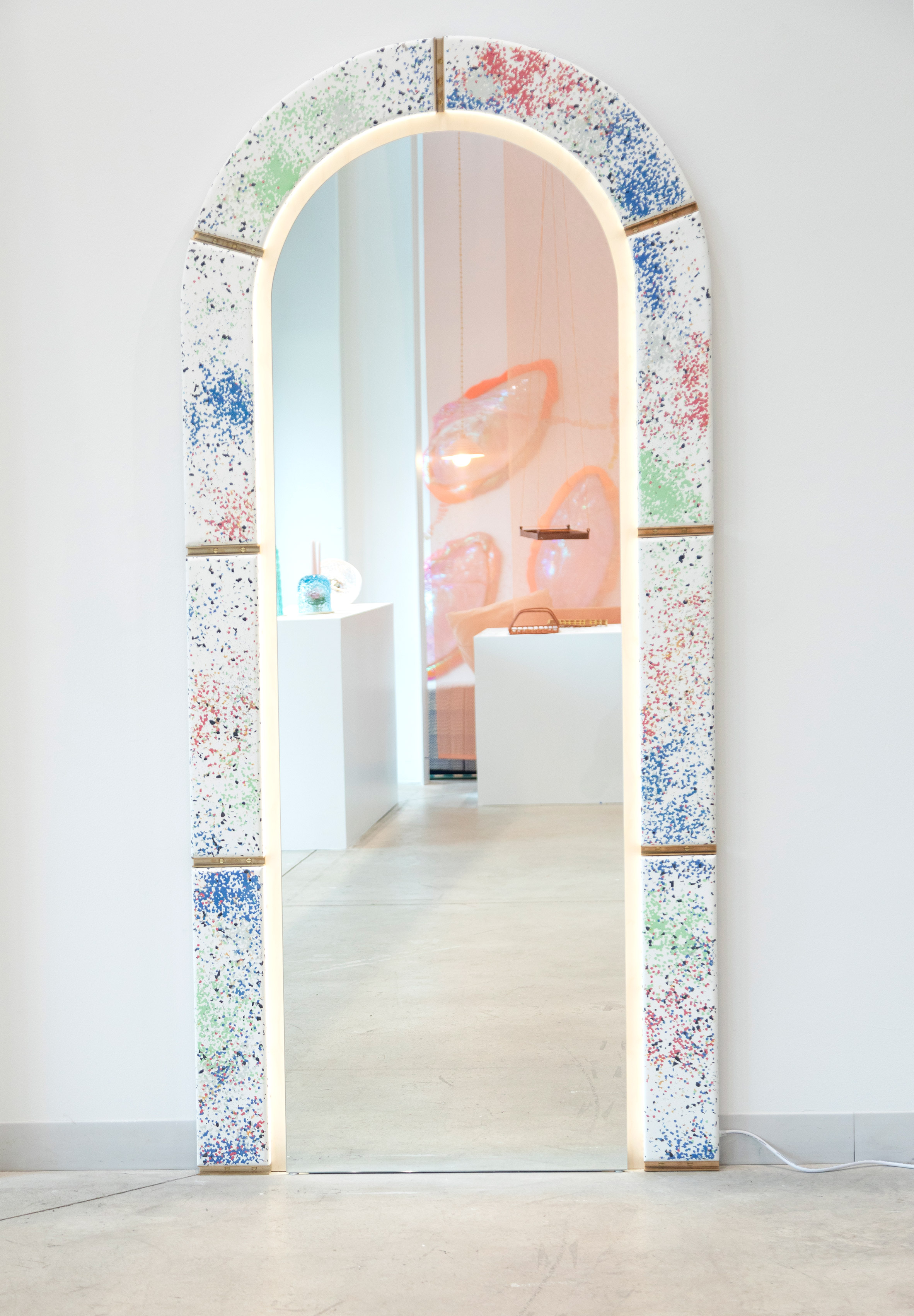
Portal Mirror by Simon Anton
Materials: recycled plastic, glass mirror, brass, birch and LEDs
"The frame of this mirror is made from compressed slabs of blended, recycled plastic, punctuated with architectural bronze hardware.
"In darkness, the LEDs lining the glass create an eerily illuminated archway."
Website: thingthing.us
Virtual Design Festival's student and schools initiative offers a simple and affordable platform for student and graduate groups to present their work during the coronavirus pandemic. Click here for more details.
The post Cranbrook design graduates express human needs through furniture and products appeared first on Dezeen.
